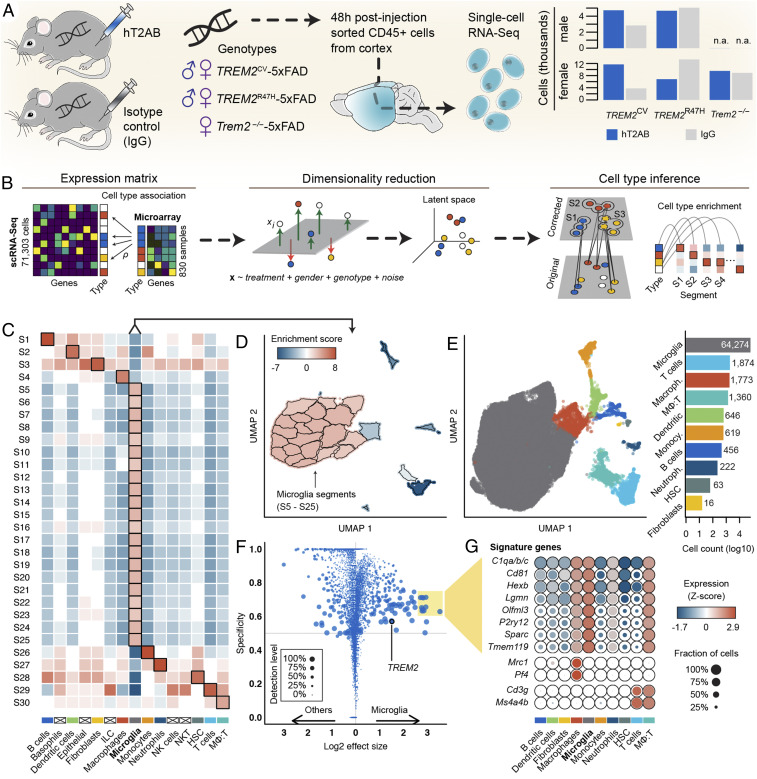Fig. 3.
Sampling microglia from the human TREM25XFAD mouse models. (A) Two days after antibody injection, CD45+ cells were collected from cortex of male and female 5XFAD mice with endogenous Trem2 knockout (Trem2−/−) with or without one of two variants of a human TREM2: CV and R47H. A total of 71,303 cells passed scRNA-seq quality control. (B–D) Supervised immune cell type classification. Individual cells were assigned a similarity score to 830 microarray samples of sorted mouse immune cells generated by the Immunologic Genome (ImmGen) Project. Cells were embedded in a lower-dimensional latent space while blocking observed covariates. Cell type labels were corrected by the enriched cell type of each segment of the latent space. (E) Uniform manifold approximation and projection of all cells representing the global data structure; cells are colored by the 10 identified immune cell types. (F) Differential gene expression of microglia. Absolute differences in expression levels to other CD45+ cells are quantified by effect size; gene expression specificity and gene detection rate were determined using conditional probabilities with uniform priors for cell types to avoid sample size bias. Specificity is defined by the posterior probability that a cell is of a certain cell type given it is expressing a particular gene; the detection level is defined by the relative fraction of cells expressing a particular gene. (G) Expression profiles of 13 microglia signature genes meeting the specificity threshold of 0.6 and an effect size threshold of 2.5, and perivascular gene markers Mrc1 and Pf4, as well as T cell markers Cd3g and Ms4a4; the mean expression of the Complement C1q subcomponents a, b, and c is shown.

